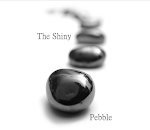Colourful 'Allmoge' cabinets like this one are a vital part
of Swedish folk art tradition and had their hay day between
ca 1770 and 1850, but date all the way back to the 1600s.
The pieces were made by hand by local craftsmen for the farmers
(also called 'allmogen' in Swedish, hence the name of the style).
They were painted by hand by a local amateur artist or at times by
a by-passer who used his/her artistic talent to pay for food or a
place to sleep. The colours used were made up of natural ingredients
such as egg- based tempura paint, blood and plant pigment giving
the pices a soft, paled or weathered look the older they get. This
along with the uneven painting is what makes them so charming.
This particular kind of cabinet is called 'Skänkskåp' and was the most
precious piece of furniture in a farmer's home, and was sometimes
part of a suite that also included a bed, a grandma' clock and table.
Though I can't be sure, I think the above cabinet dates late 1800s,
when various types of 'marble painting' became popular.
Though I am not a massive fan or Allmoge (they can sometimes
be a little 'heavy') they can certainly be beautiful when mixed
in with newer and less ornate pieces. Balance and contrast is key.
be a little 'heavy') they can certainly be beautiful when mixed
in with newer and less ornate pieces. Balance and contrast is key.
More Allmoge
from HERE.
xCharlotta
P.s. Definition of "Allmoge" - Scandinavian kurbitz / folk painted furniture.
























No comments:
Post a Comment